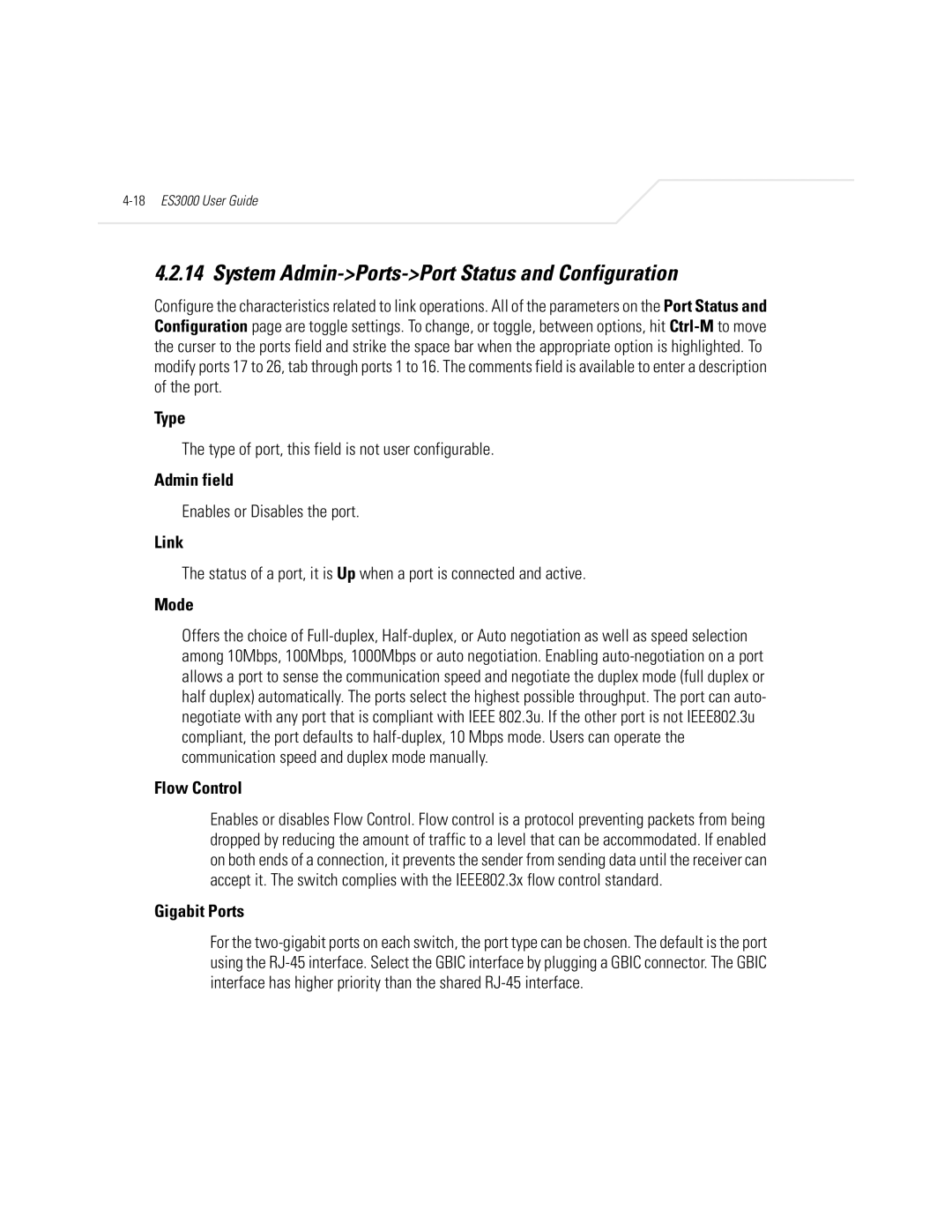4.2.14 System Admin->Ports->Port Status and Configuration
Configure the characteristics related to link operations. All of the parameters on the Port Status and Configuration page are toggle settings. To change, or toggle, between options, hit
Type
The type of port, this field is not user configurable.
Admin field
Enables or Disables the port.
Link
The status of a port, it is Up when a port is connected and active.
Mode
Offers the choice of
Flow Control
Enables or disables Flow Control. Flow control is a protocol preventing packets from being dropped by reducing the amount of traffic to a level that can be accommodated. If enabled on both ends of a connection, it prevents the sender from sending data until the receiver can accept it. The switch complies with the IEEE802.3x flow control standard.
Gigabit Ports
For the
